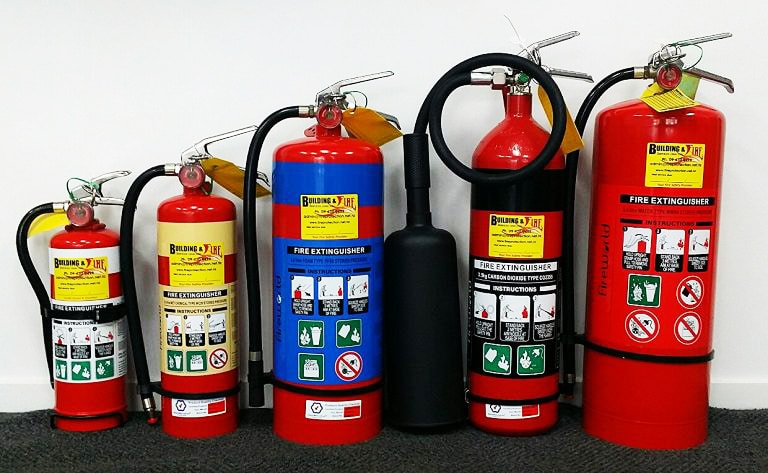Learn all about the Different Types of Fire Extinguishants
Today, fire is much easier to make than it was. Throughout history, humans have spent quite some time grinding stones or wood to produce friction and make fire. Now, with more igniters at hand, it takes a second or two to light your grill during your summer barbecue (bbq) party or your cozy fireplace during winter.
However, now that it’s easier to start, problems have become more common and it’s much harder to suppress.
PRINCIPLES OF FIRE
Fire results from a chemical reaction when three elements are present: Heat, Fuel, and Oxygen. Take one element away, and the fire can be prevented, suppressed, or controlled.
CLASSIFICATIONS OF FIRE
Different sources produce different fire types of fire, hence requiring different suppression techniques and equipment. Knowing what fire type you are facing is crucial to either successfully suppressing it or making it worse.

THE 4 BASICS OF FIRE EXTINGUISHMENT
1. REMOVING THE FUEL – STARVE
This could be achieved in different ways depending on the fuel. It could be turning off engines and pumps, creating firebreaks through a forest, or simply turning off a gas supply.
2. REMOVING HEAT – COOL
Cooling the fire drops the fuel below its ignition temperature. This could be cooling by water or switching off an element (stove/cooker)
3. REMOVING OXYGEN – SMOTHER
Smothering the fire can be achieved by the use of a fire blanket, foam extinguisher, or reducing the oxygen content by using carbon dioxide (CO2 Extinguisher)
4. INTERFERING WITH THE CHEMICAL REACTION
Interfering with the chemical reaction of combustion can be achieved using extinguishers like dry powder.
WORKPLACE SUPPRESSION TECHNIQUES CHECKLIST
- Never fight a fire alone
- Work with a buddy
- Always check before you enter an area (feel doors for heat)
- Plan your exit route (fire moves very fast)
- Always have two exits
- Confine the fire where possible (close doors and windows etc)
- Stay low to the ground (crawl if needed)
- Suppress only small fires
- Watch the fire after it is extinguished (it may re-ignite by itself)
- Most of all, DON’T PANIC!
OPERATING INSTRUCTIONS FOR FIRE SITUATIONS
FIRE ALARM
- Break the glass
- Activate the switch
- Call Fire & Emergency New Zealand (not all systems are monitored, always ensure FENZ is called)
- Evacuate the building
FIRE BLANKET
- Open the bag
- Unfold the blanket
- Ensuring your hands are protected from the flames, hold the blanket in front of your body
- Gently place or lay the blanket over the fire or wrap the person in the blanket and provide first aid
FIRE HOSE REEL
- Turn on the valve – ensure that there is water at the nozzle
- Run the hose out to the fire
- Turn on the nozzle
- Attack the fire if it is safe to do so
FIRE EXTINGUISHERS
- Pull out the pin
- Aim the nozzle at the base of the fire
- Squeeze the handle or trigger
- Sweep side to side at the base the of fire
NOTE: Most fire extinguishers will only have between 8 and 20 seconds of discharge. Use them wisely and accurately.
Fire is still one of the most common causes of mortality and property loss. Knowing all about the different Fire Suppression Procedures will enable you to know how to prevent fire and respond to fire situations with ease.
But bear in mind, the most important fire suppression technique that you should always remember is to NEVER PANIC. You know what to do, so keep calm, think well, and stay safe.
To take the Fire Suppression Procedures training, get in touch today!
Book Online Fire Training Book In-Person Fire Training
